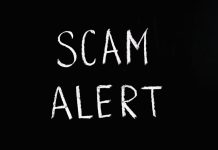One of the greatest problems with designing someone’s logo, website or conducting their entire marketing campaign lies in the fact that a job well-done isn’t a 100 percent objective thing.
You may think you are doing a great job and the results may follow suit but a client might still be dissatisfied due to the fact that ‘it wasn’t what they envisioned’.
The easiest way to avoid this little misunderstanding is to learn how to communicate with your client in a direct and unambiguous manner, which will help you create an accurate design brief.
According to experts knowing, how to make a great design brief is a major component required for a designer to do their job. Still, what does it take to make a brief that will completely avert future creative disagreements between two parties? Let’s find out!
4 Steps to Create an Awesome Design Brief for Your Client

1. Write everything down
For starters, you need to make sure you write down every important piece of information. This is mostly so you don’t forget something later on. There are always those who create notes in order to justify themselves, later on.
However, clients most likely won’t be interested in your excuses, especially when they are the ones to blame. Use your notes as a tool and not an exit strategy!
Furthermore, these notes can later be transformed into a Word file, a PowerPoint presentation or a PDF file which you can send to your clients for a review.
If you have any drafts, sketches or ideas, now would be the time to include them in order to give your clients a short insight on what the end product will be like. In other words, you are giving them the last chance to change their mind or back out.
2. Lead the conversation
Your clients might enter the meeting with a few ideas of their own, however, not everything they have to say will be equally as useful (or even usable) for the project in question.
As a more experienced party, it is your job to lead the conversation and make stop at several important points. For instance, you need to ask them to describe their company for you. You already have the point of view of an outsider and now you want to see what the people from inside the company feel about the brand.
3. Ask the right questions
Next, you should ask them to try and fully describe their objectives and their target audience. This is where things might get a bit difficult. You see, a lot of inexperienced entrepreneurs believe that the only proper way to reach out to their audience is to include absolutely everyone. Still, this kind of strategy usually ends in not appealing to anyone.
Solve this by asking them what single group they find as their main demographic. What their average consumer looks like? How old are they? What do they do for a living? What other traits they have in common?
Finally, ask them how would they describe a success? What is the most important metric? Is it the profit, the number of subscribers or the number of views on their website? This will already give you something to work with.
Most of the people from digital marketing niche will be very good in understanding your questions and demands, but if you are working with clients who don’t understand what each metric means, you have to be armed with patience, and explain everything.
4. Create a checklist
Finally, you need to ask them what is it exactly they want you to do for them. Here, you have things like:
- A new logo that represents a spirit of the company and bears their corporate colors.
- Brand new data-driven website with an emphasis on user-friendliness and overall performance.
- Something to look good across various formats including printed marketing materials and business cards.
The list goes on and on…
In conclusion
Making a proper design brief will help you avoid situations where your clients ‘like’ your design but ask you to change it anyway or complaining that the end design ‘doesn’t look premium enough’. The list of preposterous design descriptions, requests, and reactions, is virtually endless.
In other words, this simple skill saves you from having to create a new design from scratch simply because your design brief wasn’t specific enough or interpreted in the same way by both parties.
Once you have this figured out, your actual creative process will suddenly become much simpler and much more straightforward.
You May Like To Read:
- 5 Inbound Lead Generation Strategies (& How to Make Them Work!)
- 5 LinkedIn Ads Strategies To Boost Lead Generation in 2022
- 6 Effective Strategies For Lead Generation On Facebook
Author Bio: Lena Hemsworth spent a better part of her life working as a business consultant in Sydney. Now she is a freelance blogger and copywriter. When she is not working she enjoys kite surfing and taking care of houseplants.














